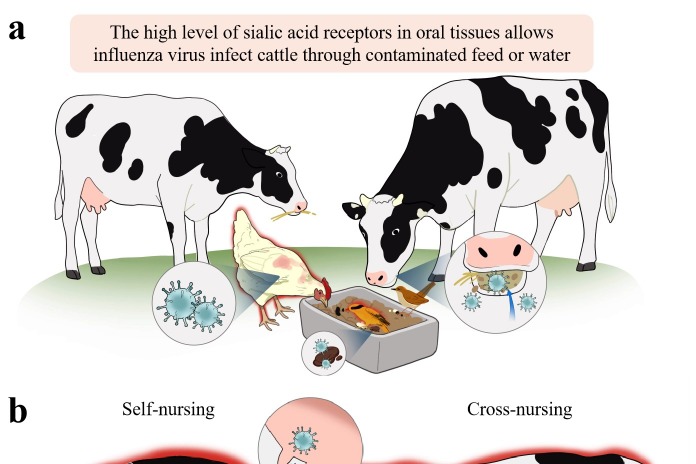Chinese scientists have found out how the H5N1 virus initially invades the mammary glands of dairy cattle and may have triggered the outbreak of H5N1 avian influenza across over 1,000 dairy farms in the United States, according to a study recently published in the journal National Science Review.
The study, conducted by Chinese Academy of Agricultural Sciences’ Harbin Veterinary Research Institute in Heilongjiang province, found that cattle oral tissues support H5N1 virus binding and replication, and virus replicating in the mouth of cattle transmitted to the mammary glands of dairy cattle during sucking.
Chen Hualan, an academician of the Chinese Academy of Sciences and a chief scientist at the institute, along with her team, also confirmed that vaccination provides full protection against the virus in dairy cows. The study suggests that targeted control of milk-stealing behavior and immunization can effectively curb H5N1 outbreaks among cattle.
Highly pathogenic avian influenza subtype H5N1 is a major zoonotic disease. Since 2021, a new strain of the virus has caused tens of thousands of outbreaks among poultry and wild birds in multiple countries.
In March 2024, the virus began infecting dairy cows in the US, spreading across more than 1,070 farms in 17 states. The outbreaks resulted in a cow mortality rate of up to 10 percent and infected at least 41 farmworkers, raising concerns for global dairy production and public health.
Previously, researchers found that the H5N1 virus damages the mammary glands of cows and contaminates milk, with about a quarter of retail milk samples in the US having been detected with the virus. However, it remained unclear how the virus initially invaded the mammary glands, and no control measures were available. The recent findings provide insights into H5N1 virus transmission and control in cattle, Chen said.
